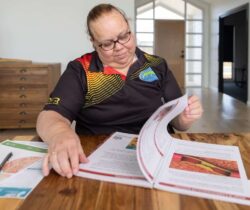The glucose (sugar) in our bloodstream does a vital job, providing our cells with energy. But if our blood glucose level (BGL) goes out of balance, the effects on our health can be serious.
This article will tell you what the optimal range for blood sugar levels in Australia is. We’ll explain how you can find out whether yours is in that range and, if it isn’t, what you can do to change this.
What is the optimal range for blood glucose levels in Australia?
In Australia, the target range for all adults over 18 is 4.0 – 7.8 millimoles of glucose per litre of blood (mmols/L). It’s important to be in the optimal range; consistently being outside it can have serious consequences. Not having enough sugar in the blood (a condition called hypoglycaemia) can cause drowsiness, seizures and unconsciousness. Having too much (hyperglycaemia) can cause chronic health conditions such as heart disease and diabetes.
Several factors can cause our blood sugar levels to go up and down.
These include:
- food—especially the type and amount of carbohydrates we eat (when we eat is also a factor)
- physical activity
- illness
- injury
- medications
- alcohol
- emotional stress
- hormonal changes.
A key factor in BGLs is how well the chemical relationship between glucose and the hormone insulin is working.
When we eat or drink, glucose from carbohydrates enters our bloodstream, causing the pancreas to release insulin. Insulin transports glucose to our muscles and organs such as the liver, effectively controlling how much sugar is in the blood.
If the glucose/insulin relationship isn’t working properly, a condition called insulin resistance develops. This is where our cells are not responding normally to insulin and the body is unable to convert glucose into energy. That causes more and more unused glucose to be ‘dumped’ in the bloodstream, and that in turn can result in hyperglycaemia.
The most common symptoms of hyperglycaemia are:
- frequently needing to urinate
- increased thirst
- tiredness
- weight loss
- blurred vision
- difficulty or delayed healing of infections
Hyperglycaemia can be a symptom of diabetes.
About Diabetes
Diabetes mellitus (to give it its proper name) is where the body either can’t produce insulin or is unable to use it effectively.
There are three main types of diabetes—type 1, type 2 and gestational diabetes.
Type 1 diabetes
Type 1 diabetes occurs when the pancreas is unable to produce any insulin. At the moment, type 1 diabetes cannot be prevented and there is currently no cure available.
Type 2 diabetes
Type 2 diabetes is where the body is still able to produce insulin but the body becomes resistant to the normal effects of insulin and over time may even produce less insulin. Type 2 diabetes can in many instances be delayed or prevented.
Gestational diabetes
Gestational diabetes is when hyperglycaemia is diagnosed in pregnancy. Although it usually goes away after the baby is born, it increases both the mother’s and baby’s risk of developing type 2 diabetes later in life. Some women can manage their gestational diabetes by making lifestyle changes, while others need medication.
About diabetes in Australia
Diabetes is the biggest challenge facing Australia’s health system.
The following statistics from Diabetes Australia show just how big a challenge it is:
- 134,000 Australians are currently living with type 1 diabetes; type 1 accounts for around 9% of all diabetes in Australia.
- Almost 1.3 million Australians are currently living with type 2 diabetes; type 2 accounts for around 87%.
- 1 Australian develops diabetes every five minutes.
- In Australia there are around 1.2 million hospitalisations every year because of diabetes-related conditions such as heart disease and kidney failure.
- The prevalence of all types of diabetes is increasing.
The scale of the problem shows why it’s so important that you check your risk levels.
Blood glucose test
A blood glucose test would be ordered by your doctor if there is a risk or need. This test measures how much glucose you have in your blood. There are two types:
- A non-fasting test, where a blood sample is taken.
- A fasting test, where you fast (don’t eat or drink anything apart from water for 8-10 hours) and then a blood sample is taken.
What do blood glucose test results mean?
When your test results are sent to your doctor or specialist healthcare provider, they will explain what they mean.
Having pre-diabetes means it’s time to take action—pre-diabetes can increase your risk of developing type 2 diabetes by 10 to 20 times. But if you do take action, type 2 diabetes can be prevented. There are things you can do to lower your blood glucose levels if you have pre-diabetes, including eating a nutritious diet.
Another very positive move is to join a healthy lifestyle program such as Life!
How the Life! program can help you
Joining the Life! program is a huge step towards improving your lifestyle so that you can manage pre-diabetes and avoid developing type 2.
Our experienced health professionals will help you make changes so you can achieve your health goals and reduce your risk of type 2 diabetes, heart disease and stroke.
Life! is a free healthy lifestyle program that helps you improve your eating habits, increase your physical activity and manage stress. It’s available as a group course or as a Telephone Health Coaching service.
You can take a quick online health test and check your eligibility for the program here.
Life! is funded by the Victorian government and managed by Diabetes Victoria.
Sources
- https://www.diabetesaustralia.com.au/about-diabetes/what-is-diabetes/
- https://www.aihw.gov.au/reports/diabetes/diabetes/contents/how-common-is-diabetes/all-diabetes
- https://www.aihw.gov.au/reports/diabetes/diabetes/contents/what-is-diabetes
- https://www.chi.org.au/post/unraveling-blood-sugar-part-i-the-truth-about-normal-levels-understanding-your-test-results
- https://www.diabetesaustralia.com.au/about-diabetes/type-2-diabetes/
- https://www.diabetesaustralia.com.au/managing-diabetes/blood-glucose-range/
- https://www.diabetesaustralia.com.au/managing-diabetes/hypo-hyperglycaemia/
- https://www.gisymbol.com/gi-and-diabetes/
- https://www.healthdirect.gov.au/blood-glucose-test#prepare
- https://www.healthdirect.gov.au/blood-glucose-test#what-is
- https://www.healthdirect.gov.au/glycaemic-index-gi
- https://www.healthdirect.gov.au/hyperglycaemia-high-blood-sugar
- https://www.mayoclinic.org/diseases-conditions/diabetes/expert-answers/glucose-levels/faq-20424316#:~:text=Several%20factors%20can%20contribute%20to%20high%20blood%20sugar,menses%20and%20menopause%2C%20can%20influence%20blood%20sugar%20levels.
- https://www.ndss.com.au/about-diabetes/resources/find-a-resource/understanding-pre-diabetes-fact-sheet/
- https://www.nhs.uk/common-health-questions/food-and-diet/what-is-the-glycaemic-index-gi/
- https://www.nhsinform.scot/illnesses-and-conditions/blood-and-lymph/hyperglycaemia-high-blood-sugar
- https://www.nrfmp.com.au/post/5-ways-to-keep-your-blood-sugar-levels-low-throughout-the-day#:~:text=5%20Ways%20to%20keep%20Your%20Blood%20Sugar%20Levels,Smoking%20…%206%20Monitor%20blood%20glucose%20levels%20
- https://www.vively.com.au/post/what-is-the-normal-range-for-blood-glucose-levels-in-australia
- https://lifeprogram.org.au/health-hub/what-to-do-pre-diabetes/
- https://www.aihw.gov.au/getmedia/3133d5a0-91b9-4d72-bb74-c35b62d5c735/Diabetes-Australian-facts.pdf.aspx?inline=true
- https://www.aihw.gov.au/getmedia/3133d5a0-91b9-4d72-bb74-c35b62d5c735/Diabetes-Australian-facts.pdf.aspx?inline=true
Reviewers
Kristie Cocotis, Head of Prevention and Health Promotion
Sarah Dubé, Strategy and Engagement Lead
Ria Cheripuram, Digital Communications Officer
Tegan Kohlman, Communications and Social Marketing Officer





